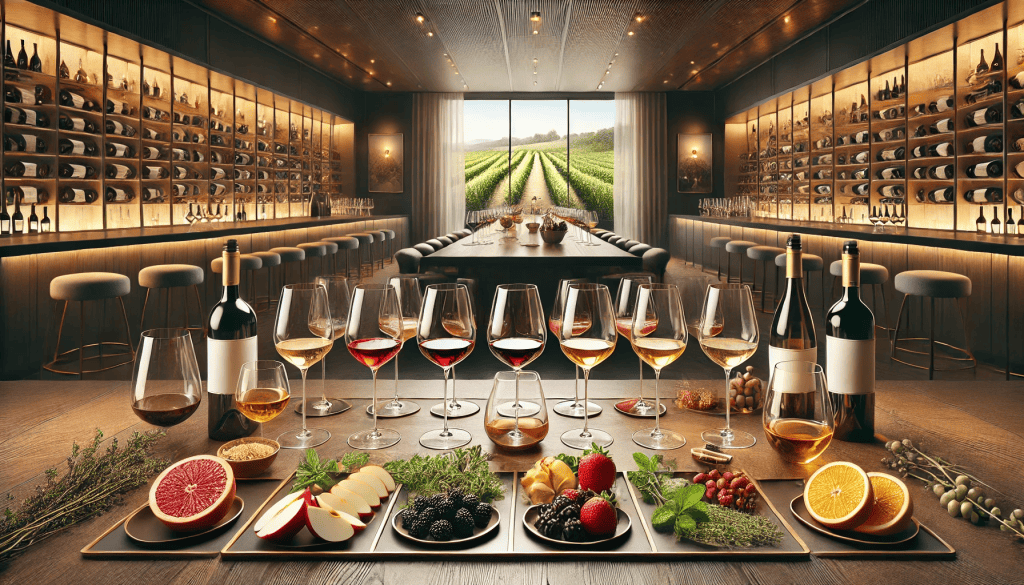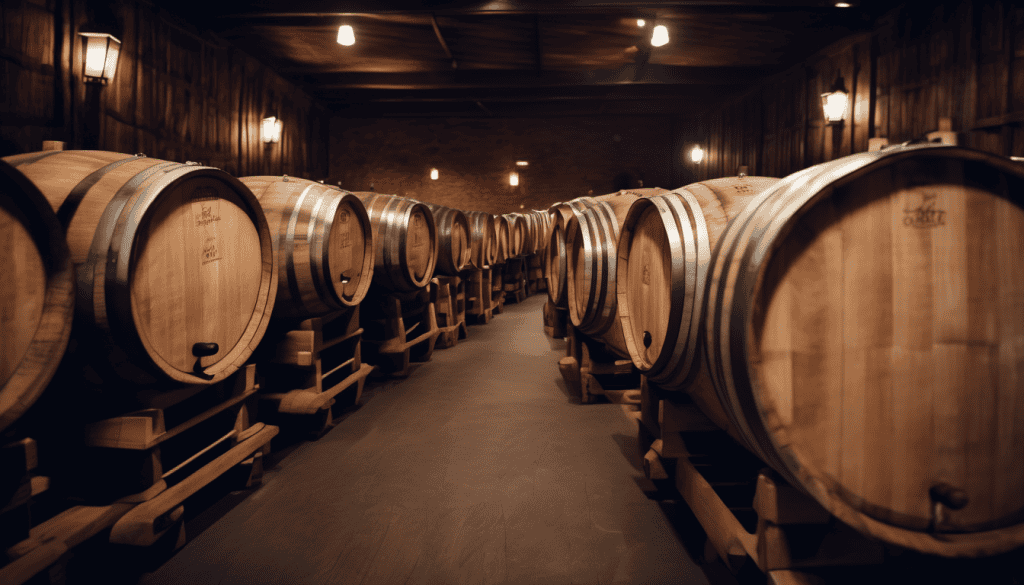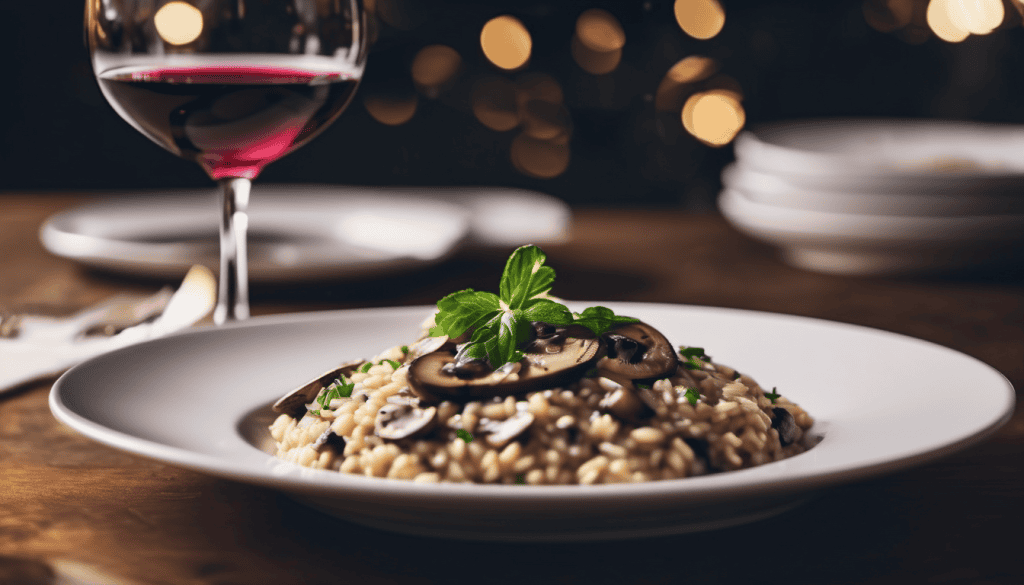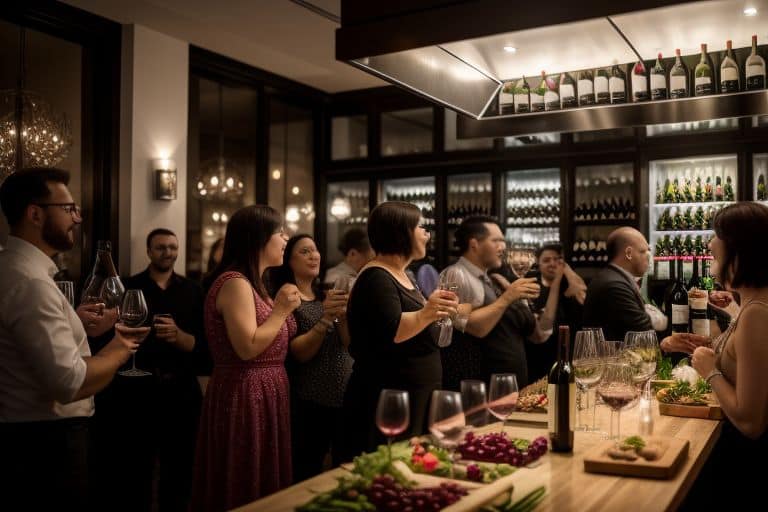Have you ever wondered what wine tastes like? From my experience, I’ve spent years exploring the diverse and fascinating world of wine flavors. In that process, I’ve discovered that wine can exhibit an incredible spectrum of flavors, aromas, and sensations on the palate.
In this article, I’ll share my insights and experiences to help you answer the question, “what does wine taste like” and how to appreciate all the nuances and subtleties in every glass.
Welcome to Didi Somm, and let’s enjoy the journey – Cheers!
Important Notice: The information in this article is for general and public information purposes only. It solely reflects Didi Somm’s or his Staff’s opinion, and no responsibility can be assumed for errors or omissions in the service’s contents. For details, please check the Disclaimer at the bottom of the homepage.

Key Takeaways
Typical wine flavors include fruits, flowers, herbs, spices, earthiness, and oak
The primary tastes in wine are sweetness, acidity, tannin, and alcohol
Aroma, flavor, body, and finish all contribute to the overall taste and character of a wine
Tasting wine involves sight, smell, and taste – look at the color, sniff the aroma, then sip and savor
Knowing what to expect flavor-wise from different wine varieties and styles and taking detailed tasting notes enhances your tasting experience
Understanding Wine Flavors
So, what does wine taste like? While every wine is unique, in general, wine exhibits flavors and aromas derived from the grapes, the winemaking process, and aging. At its core, wine has tastes of sweetness, acidity, and also bitterness from tannins.
These fundamental building blocks combine with a myriad of flavors and aromas to yield a wine’s distinctive taste profile.
In my experience, wine flavors often evoke fruits, flowers, herbs, spices, and other natural elements. For example, a Sauvignon Blanc may have notes of grapefruit, green apple, and fresh-cut grass. A Malbec often has flavors of blackberry, plum, and tobacco leaf. Part of the fun of wine tasting is identifying these flavor notes and seeing what aromas and tastes you perceive in each glass.

Exploring the flavors of different wines is crucial to fully appreciating the diversity in wine taste. Understanding the unique flavor profiles and subtleties each wine presents offers a richer experience.
Factors Influencing Wine Flavors
Many factors impact the flavors you taste in wine. Key influences include the grape variety, the terroir, and, notably, the winemaking processes such as oak aging. Oak aging can impart a complex array of flavors to wine, including vanilla, coconut, and even secondary aromas reminiscent of baking spices like cinnamon, nutmeg, and cloves. These nuances contribute significantly to the wine’s overall flavor profile, enhancing its depth and complexity.
Grape Variety: The Impact of Pinot Noir and Others
Each grape has its characteristic flavor profile. For instance, Chardonnay often tastes of apple, lemon, and pineapple, while Pinot Noir evokes cherry, strawberry, and mushroom notes.
Terroir
This term refers to the complete natural environment where the grapes grow, including the climate, soil, and topography. The same grape variety grown in different regions will taste different due to the unique terroir.

Winemaking techniques
Practices like oak aging, malolactic fermentation, and sur lie aging impart distinct flavors to the finished wine.
Vintage
The weather conditions during a particular growing season affect that year’s grape harvest and wine flavors. Hot years produce riper grapes and more full-bodied wines, while cooler years yield lighter wines with more acidity.
Aging
As wine ages, its flavors evolve and develop more complexity. Red wines tend to experience a fascinating transformation in which fruit notes become less pronounced in addition to the flavors evolving while tertiary notes of earth, spice, and umami emerge. I love tasting aged wines to experience how time transforms the flavors.

Major Types of Wine Flavors
Fruity – Many wines exhibit fruit flavors. White and sparkling wines tend toward citrus, tree fruit, tropical fruit, and melon notes. Red wines often evoke red fruits, black fruits, and blue fruits. The red wine taste includes a balance of sweeter, dark-fleshed fruits and a bitter dryness, often complemented by its coloring and recommended food pairings that enhance its general flavor profile. The white wine taste is described as bright, crisp, fresh, fruity, citrusy, and floral, with a range of sweetness that underscores its refreshing nature, making it a perfect choice for relaxation and celebration.
Floral
Certain wines have delicate floral aromas of rose, violet, orange blossom, elderflower, or geranium. These are most common in white wines like Riesling, Torrontés, and Gewürztraminer.
Herbal
Some wines, especially reds, have notes of fresh or dried green herbs like mint, eucalyptus, thyme, oregano, and tea leaves. Cabernet Sauvignon and Cabernet Franc are known for these flavors.
Spicy
Wines derived from oak aging can have warming baking spice notes of vanilla, clove, cinnamon, nutmeg, and allspice. Some wines exhibit peppery or licorice notes.
Earthy
Older red wines and some whites develop savory, earthy qualities described as mushroom, truffle, forest floor, potting soil, or leather.
Minerality
Certain wines, particularly those grown in mineral-rich soils, can have flavors evoking wet stone, flint, chalk, slate, or graphite. Minerality is most associated with Riesling, Chablis, and Sancerre.
Pairings Bring Out the Wine’s Flavors
Wine flavors don’t exist in isolation – they come to life when paired with food. Tasting wine alongside different dishes can accentuate certain flavors in the wine and create unique interactions.

In my experience, matching wine with complementary flavors in a dish makes both taste better. A buttery Chardonnay goes beautifully with lobster and drawn butter. An earthy Pinot Noir is heavenly with mushroom risotto. Pairing wine with contrasting flavors, such as off-dry Riesling with spicy Thai curry, is also delicious.

High-acid wines, known for their tart and zippy profile, pair exceptionally well with fatty foods. They enhance the dining experience by cutting through the richness and refreshing the palate. Tasting how the wine flavors evolve with each bite of food adds another dimension to your enjoyment.
How to Conduct a Wine Tasting – the 3 Steps
To fully perceive all the aromas and flavors wine offers, you need to engage more than just your taste buds. I approach wine tasting as a “full sensory experience” involving sight and smell.

For Example, when assessing its body, a pinot grigio, known for its light, dry, and moderately acidic profile, can be compared to the consistency of fat-free milk. It is ideal for a warm summer day and is best served chilled. The “finish” is the sensation and flavors that linger in your mouth after swallowing, the secondary aromas and tertiary aromas. High-quality wines have a persistent finish.
With practice, you’ll get better at detecting the complex layers and multiple flavor notes in each wine.
FAQs – What does wine taste like?
1. What gives wine fruity flavors?
The actual grape juice imparts fruity flavors, especially in young wines. Specific winemaking techniques, like cold fermentation, also preserve fresh fruit flavors.
2. What does “dry” wine taste like?
A dry wine is simply a wine that has little to no residual sugar content. It lacks overt sweetness and often tastes more of tart fruit, floral notes, and savory qualities instead.
3. What flavors come from oak aging?
When wine is fermented or aged in oak barrels, it takes on flavors of vanilla, clove, nutmeg, coconut, cedar, smoke, and toast or char from the wood.
4. What does acidity taste like in wine?
Acidity tastes tart and zesty. It makes your mouth water and gives the wine a bright, crisp, refreshing quality. Wines with high acidity have flavors of citrus, green apple, and under-ripe fruits.
5. What flavors do tannins contribute to wine?
Tannins create a drying sensation and add bitter, astringent flavors. They can taste like unsweetened black tea, walnuts, or tree bark. Tannins give red wine structure and texture.
6. What does “full-bodied” wine taste like?
Wines described as full-bodied have a rich texture and heavier weight on your palate. They fill your whole mouth with flavor and tend to have higher tannins, alcohol, and glycerin.
7. What does minerality in wine taste like?
Minerality comes across as flavors of wet river rock, limestone, chalk, flint, or saline (salt). It gives the wine a subtle earthy taste and slightly drying effect, similar to licking a rock.
8. Where does the spice flavor in wine come from?
Wines get spicy notes from phenolic compounds in the grapes, winemaking, and oak aging. Different grapes exhibit baking spice, pepper, or licorice flavors.
9. Why do some wines taste earthy?
Fresh, fruity notes subside as wines age and are replaced by savory, earthy flavors due to chemical changes in the wine. Earthiness can also come from the soil and environment where the grapes were grown.
10. What makes a wine taste “green”?
Wines described as green are usually young and exhibit flavors of fresh herbs, grass, leaves, stems, or bell pepper. These wines come from grapes harvested slightly under-ripe.
11. What wine tastes the sweetest?
Dessert wines like Port, Sauternes, and Tokaji are the sweetest, with high levels of residual sugar. Moscato, Riesling, and Gewürztraminer can also taste quite sweet, even if technically semi-dry.
12. Which wines tend to have the boldest flavors?
Red wines generally have bolder, more concentrated flavors than white wines. Cabernet Sauvignon, Syrah, Malbec, and Nebbiolo tend to be full-flavored, tannic wines.
13. Which wines are known for tasting “buttery”?
Chardonnays that undergo malolactic fermentation and/or oak aging often have a rich, creamy texture and buttery flavor due to the diacetyl compound created during the winemaking process.
14. Do all wines improve with age?
No, only a small percentage of fine wines are made to be aged for many years. Most wines are meant to be consumed young while the fruit flavors are vibrant. Over 90% of wines are best enjoyed within a year of release.
15. What flavors can you expect from Rosé wine?
Rosé wines are often characterized by flavors of strawberry, cherry, raspberry, watermelon, citrus, and subtle florals. They can range from bone dry to semi-sweet.
16. What is the general flavor profile of white wine?
White wine typically offers a range of flavors from crisp, citrusy, and mineral notes to richer, creamier tastes depending on the grape variety and winemaking process. It’s best served chilled, making it perfect for sipping on a relaxing day by the pool or pairing with lighter dishes to enhance the dining experience.
Conclusion
As you can see, wine flavors are diverse, nuanced, and complex. Tasting what’s in your glass involves much more than just your taste buds – it’s a whole sensory experience of sight, smell, taste, and even touch.
By understanding the origin of wine flavors and learning how to taste wine properly, you’ll develop a deeper appreciation for the incredible range of aromas, flavors, and sensations wine offers. You’ll also be better equipped to identify which wine styles and flavor profiles you enjoy most.
There’s always more to learn and new flavors to discover. Visit a local winery or wine shop, attend a tasting event, and try wines from different regions to continue your flavorful journey with various wines. Cheers!
For your reference, the latest articles by Didi Somm include:
- Mini Wine Fridge – Best Selection of up to 18 Bottles
- What Temperature Should Red Wine Be Stored At? – 7 Expert Tips
- Non Alcoholic Wine – 5 “Great Myths” You Must Know
- How to Use a Wine Opener? – 7 Best Tips You Must Know
- Best Red Wine For Cooking – All You Need To Know
- How Much Does a Bottle of Wine Weigh? – Find Out Here
Important Notice: The information in this article is for general and public information purposes only. It solely reflects Didi Somm’s or his Staff’s opinion, and no responsibility can be assumed for errors or omissions in the Service’s contents – for details, please check the Disclaimer at the bottom of the homepage.




